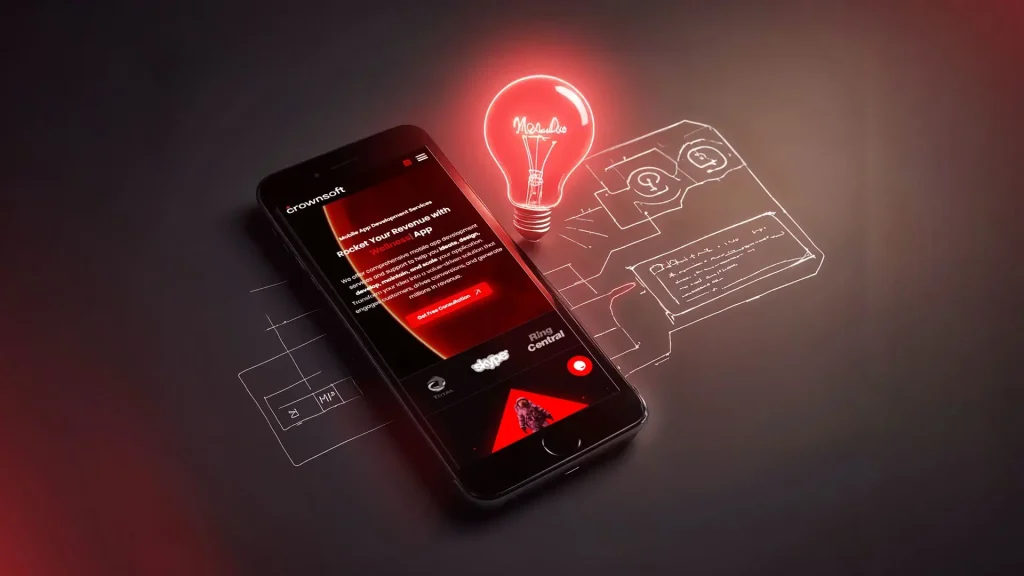
Dream to Screen: Step-by-Step Guide to Developing Your First Mobile App
Ready to take a leap into the tech pond and come out with an app that doesn’t crash on launch?
Greetings, Future Millionaire! A recent PEW research published in January 2024 noted that close to 97% of Americans now own a mobile device, that’s 9 out of 10 people. An Exploding Topics survey reveals that on average an American smartphone user spends almost 3 hours and 40 minutes on apps in 2024.
What’s interesting about that, you ask? As it happens, 98% of mobile app revenue worldwide came from free applications, Radix Web identified in its recent report. And keeping that in mind, Statista estimates that mobile apps will generate almost $935 billion in revenue by the end of 2024.
Have I piqued your interest?
So let’s strap in and traverse the chaotic, caffeine-fueled world of custom mobile app development.
What Is Custom Mobile App Development?
Custom mobile app development refers to designing and developing smartphone applications personalized to cater the specific needs and objectives of a business. Compared to OTS (off the shelf) applications like Gmail, Whatsapp etc. custom applications are built from scratch (or as the pros call it from the ground up), to align with a business’s unique customers, workflows, branding, and goals.
Custom mobile app development provides better security, easier usability, simpler modification & scalability, and offers businesses a competitive advantage. In addition, custom applications are purpose built to serve unique business needs and a specific audience.
An Oversimplified Guide to Developing Your First Mobile App
Custom mobile app development services offer businesses remarkable benefits as we discussed above. Since they are purpose built, there is immense flexibility in features and functionality, as well as providing a high end user experience to customers. They also offer better integration and fewer compatibility issues thanks to pre-launch quality testing.
Impact on Step 1: Ideation - "The Lightbulb Moment"
First things first.
Every app begins with an idea. Not necessarily a good one, but hey, you’ve got to start somewhere. This is the part where you dream up something that you think the world can’t live without. Or, at least something that keeps you up at night (and I don’t mean your neighbor’s dog).
The ideation process is where you define the product vision, conduct in-depth user research, and create a sketch of the MVP (minimum viable product). The ideation process is crucial to ensure the app will increase customer satisfaction, differentiate your brand from competitors, find ways to capture customers attention, and determine how to build brand recognition.
Step 2: Market Research - "Spying Legally"
Once you’ve nailed down your world-changing idea, it’s time to snoop around. Look at what’s already out there. Is someone already doing it better? Is there a niche of desperately underserved left-handed users? Market research helps you figure out if your app should go the way of the dinosaurs or if it actually stands a chance.
This step is possibly a make or break stage for your app development process. Professional developers recommend answering important questions including:
- Is there a market need for this application?
- Who is our target market, and what are their unique preferences?
- Who are our competitors?
- What obstacles do we face?
- Does our mobile application have a unique differentiation factor from the competition?
- Do we have a viable mobile business model to generate revenue from the app?
- What will be our optimal marketing strategy?
Step 3: Wireframing - "Blueprints, but Less Boring"
Next up, sketch your app. And no, you don’t need Van Gogh skills for this. Wireframing is basically creating a storyboard for your app. It’s about planning where all your buttons and features go. Think of it as organizing a party and deciding who’s sitting next to whom to avoid any cataclysmic clashes.
Below is a sample wireframing process outline for a food delivery app from a custom mobile app development company:
- 1- Create target user flow mapping
- 2- Sketch of the core part of the user flow
- 3- Setting a Mobile Frame
- 4- Determine the layout using boxes
- 5- Employ design patterns
- 6- Bring in actual copy
- 7- Ensure your content scales well
- 8- Connect the pages together to create a flow
- 9- Test the design decisions
Step 4: Technical Feasibility - "Tech Babble Time"
You’ve got a design, but can it actually be built? This step is where you talk to a freelance developer (who might steal your idea and money) or a professional custom mobile app development company like Crownsoft who, for a cup of coffee or the promise of eternal gratitude, will give you FREE consultation and tell you whether your app idea involves standard coding or breaking the laws of physics.
Step 5: Prototyping - "Fake It ‘til You Make It"
Now, let’s make a pretend version of your app. This prototype is something you can click through to feel like it’s real without the backend support. It’s like having a car without the engine; it looks cool, but don’t try to drive it just yet.
Step 6: Design - "Making It Pretty"
This is where UI/UX comes in. Make it pretty, make it user-friendly, and for the love of sanity, make sure your fonts are legible. This is the stage where a beautiful interface can make even the most average app feel like a premium one.
Step 7: Development - "Where Magic Happens"
And by magic, I mean long, coffee-fueled hours where your crownsoft developers will bring your static designs to life. This stage is fraught with challenges, bugs, and more bugs. Did I mention bugs?
Step 8: Testing - "Breaking Things on Purpose"
It’s time to try and break your app (better you than your users). Testing can be less fun but it’s crucial. Fix those bugs, improve performance, and ensure that your app doesn’t crash every time someone tries to do something unexpected.
Step 9: Launch - "The Big Bang"
Finally, you’re ready to launch. Submit your app to the App Store, Google Play, or any other platform you fancy. Then bite your nails waiting for approval.
Step 10: Marketing and Maintenance - "Keep It Shiny"
Once your app is out, it’s not time to relax just yet. Now comes the marketing—begging friends to download it, making promotional tweets that four people will see (including your mom), or perhaps even some actual App store optimization and advertising (with the help of crownsoft). Remember, an app is like a needy plant: keep it updated, listen to user feedback, and continually improve.
Conclusion
There you have it—a journey from idea to App Store, smoothness of this journey depends on your app development partner, so choose wisely.
References
- 1- https://buildfire.com/app-statistics/
- 2- https://www.pewresearch.org/internet/fact-sheet/mobile/
- 3- https://radixweb.com/blog/mobile-app-usage-statistics
- 4- https://radixweb.com/blog/mobile-app-development-trends
- 5- https://explodingtopics.com/blog/smartphone-usage-stats
- 6- https://www.emarketer.com/content/the-majority-of-americans-mobile-time-spent-takes-place-in-apps
- 7- https://balsamiq.com/learn/articles/mobile-app-wireframing-guide/
Get a Free Consultation
With Crownsoft’s Senior Business Analyst














